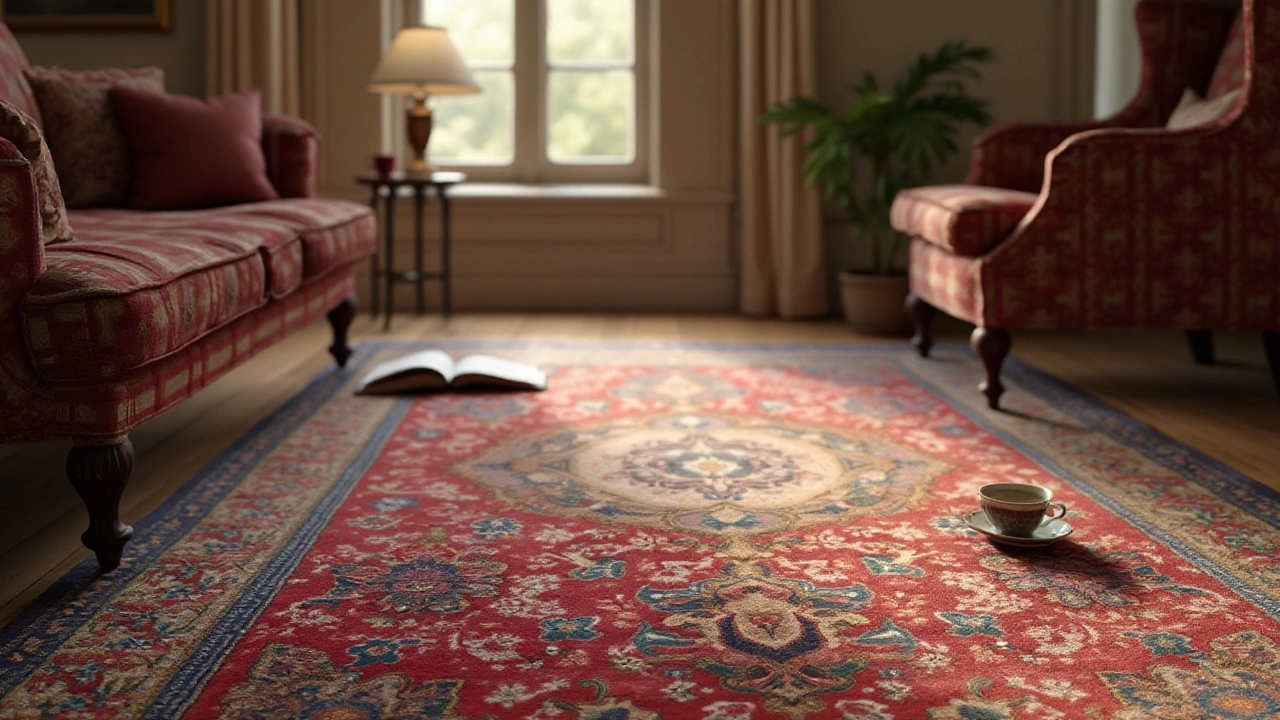High-Quality Rugs: How to Choose, Care for & Style Them
When you’re hunting for a rug that lasts, looks good and feels comfy, it’s easy to get overwhelmed by options. The trick is to focus on a few key things: material, construction, and how the rug fits your space. Nail those and you’ll end up with a floor piece that holds up for years and still feels fresh.
What Makes a Rug High‑Quality?
First, check the material. Natural fibers like wool and silk are at the top of the list. Wool is durable, resists stains and stays warm in winter. Silk gives a luxe shine but needs more careful handling. If you’re on a budget, look for high‑grade synthetic blends that mimic wool’s feel without the price tag.
Next, look at the weave. Hand‑knotted rugs have each knot tied by hand, so the knot count per square inch tells you how dense it is. Higher knot density means a tighter, smoother surface that won’t wear out quickly. Flat‑woven or tufted rugs are quicker to make, but they can flatten faster under heavy traffic.
Edge finishing matters too. A rug with a tightly bound edge will stay together longer. Loose fringe or raw edges can fray, especially in high‑traffic areas. Finally, give the backing a once‑over. A solid, non‑slip backing prevents sliding and protects the floor underneath.
Caring for Your Rug to Keep It Looking Fresh
Cleaning is simpler than you think. Vacuum both sides of the rug regularly – use a suction-only setting to avoid pulling fibers. Rotate the rug every few months so the wear spreads evenly.Spill something? Act fast. Blot, don’t rub, with a clean cloth, then use a mild detergent mixed with water. Test any cleaner on a hidden patch first. For deeper stains or a thorough refresh, consider professional cleaning, especially for wool or silk pieces.
When you’re placing the rug, think about furniture. Putting heavy sofas directly on a brand‑new rug can dent the fibers. Give the rug a day to settle, then use a rug pad underneath. A pad adds cushion, protects the floor, and reduces denting. If you’re covering a dining table, choose a low‑pile rug that stays flat and easy to clean.
Size matters. A good rule of thumb: leave at least 18‑24 inches of floor visible around the rug. For a sofa set, you’ll want the front legs of the couch sitting on the rug, creating a cohesive look. In a bedroom, a rug that extends beyond the bed’s sides adds a plush feel without overwhelming the space.
Finally, store rugs properly when you move or seasonally change décor. Roll them (don’t fold) and keep them in a breathable bag. Avoid stacking heavy boxes on top, as that can crush the fibers.
By checking material, weave, and edges, then keeping up with simple vacuuming, spot‑cleaning, and smart placement, you’ll get the most out of any high‑quality rug. It’s not just a floor covering – it’s a piece that ties your whole room together.
When diving into the world of rugs, knowing how to distinguish a piece of quality craftsmanship can significantly affect your home's interior. Understanding factors like material, weave, and overall durability is essential. This article provides key insights into recognizing a rug's quality, including tips on material longevity, knot count significance, and design precision. By becoming informed, you ensure that your investment not only adds beauty but also stands the test of time.
Dec, 9 2024
